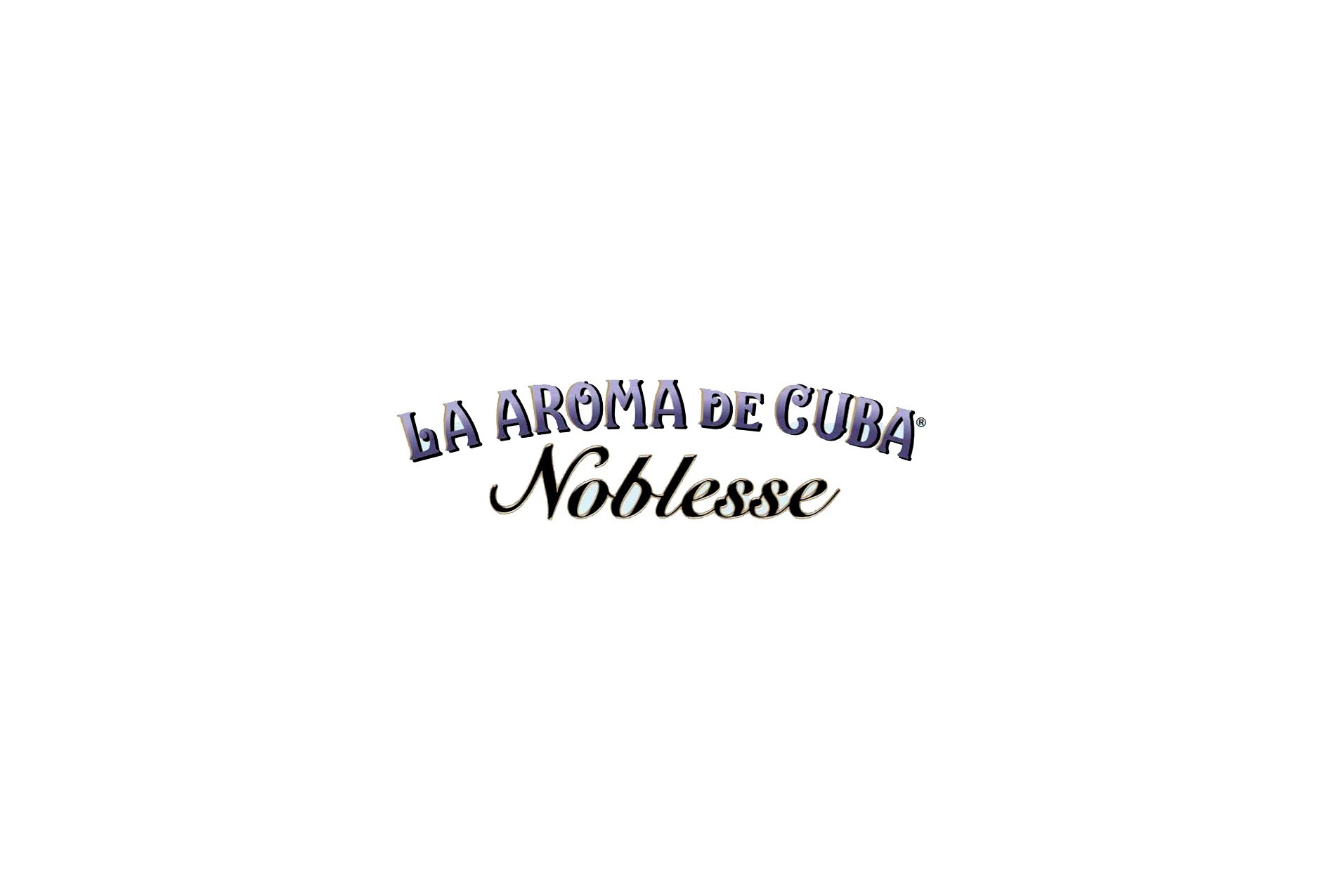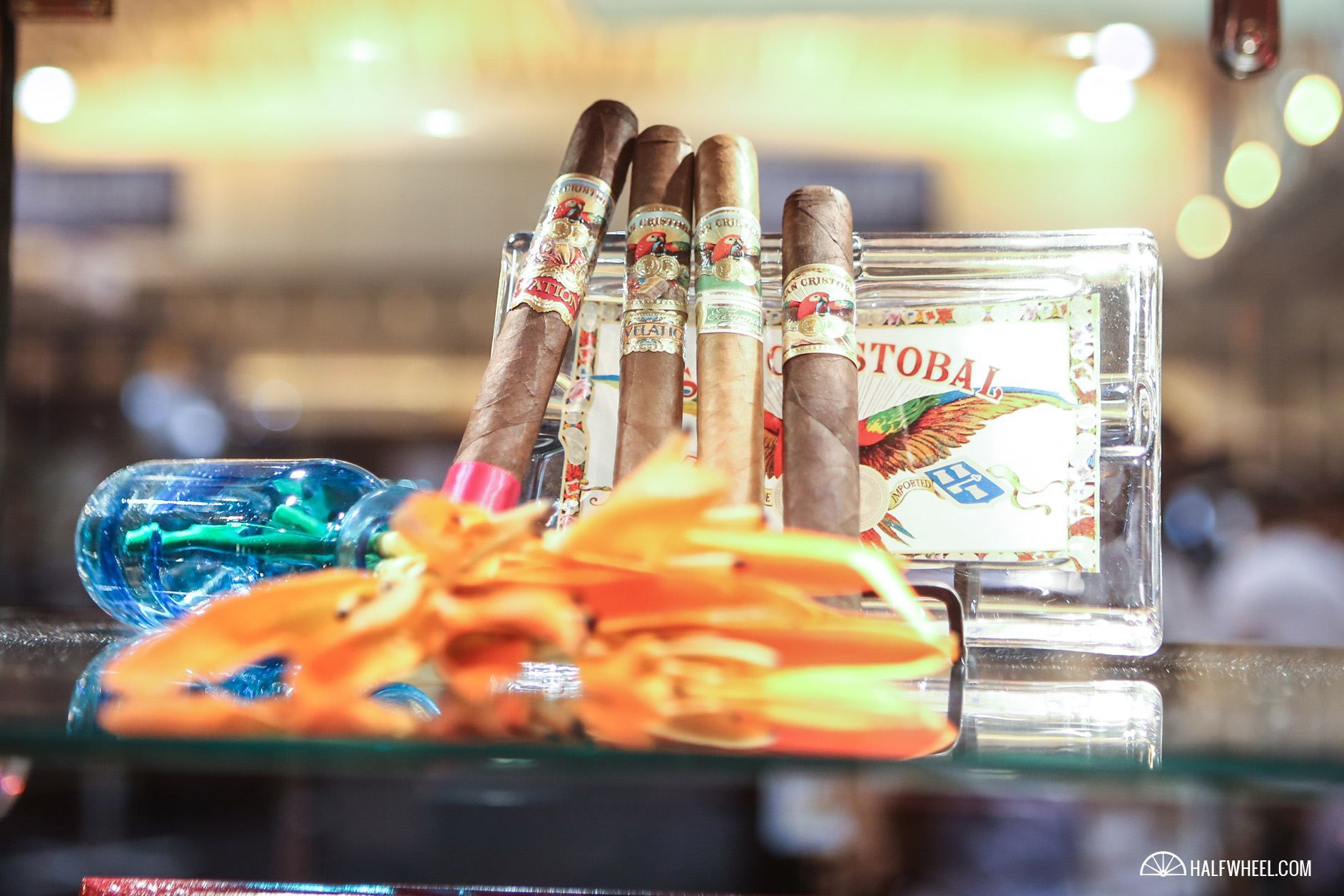In 2014, Ashton released a limited edition offshoot of its popular La Aroma de Cuba brand named Noblesse. It was made with an Ecuadorian habano wrapper covering dual Nicaraguan criollo and habano binders as well as filler tobaccos grown in Nicaragua. New vitolas were added in 2015 and 2016—each of which was also a limited edition—but since 2016, there has been nothing new with Noblesse.
That changed earlier this year when Ashton began shipping a totally new version of the Noblesse line in four different vitolas. Like the limited edition versions, the new Noblesse is made by My Father Cigars S.A., which produces all of the La Aroma de Cuba cigars, but it’s not simply the same blend. The new regular production Noblesse blend uses Mexican San Andrés oscuro wrapper covering an internal blend of tobaccos grown in the Estelí, Jalapa, and Namanji regions of Nicaragua.
There are currently four different regular production vitolas in the La Aroma de Cuba Noblesse line-up.
In an email, Sathya Levin, president and ceo of Ashton, told halfwheel that the initial shipments of the La Aroma de Cuba Noblesse were somewhat limited: only 750 boxes of each vitola were shipped to Ashton’s top 300 accounts, and those stores will have exclusive access to the cigar through 2024. According to Levin, Ashton will expand the distribution of the cigar to “both in the US and to international markets” next year.
Note: The following shows the various regular production La Aroma de Cuba Noblesse vitolas. Some of these cigars may have been released after this post was originally published. The list was last updated on Aug. 31, 2024.
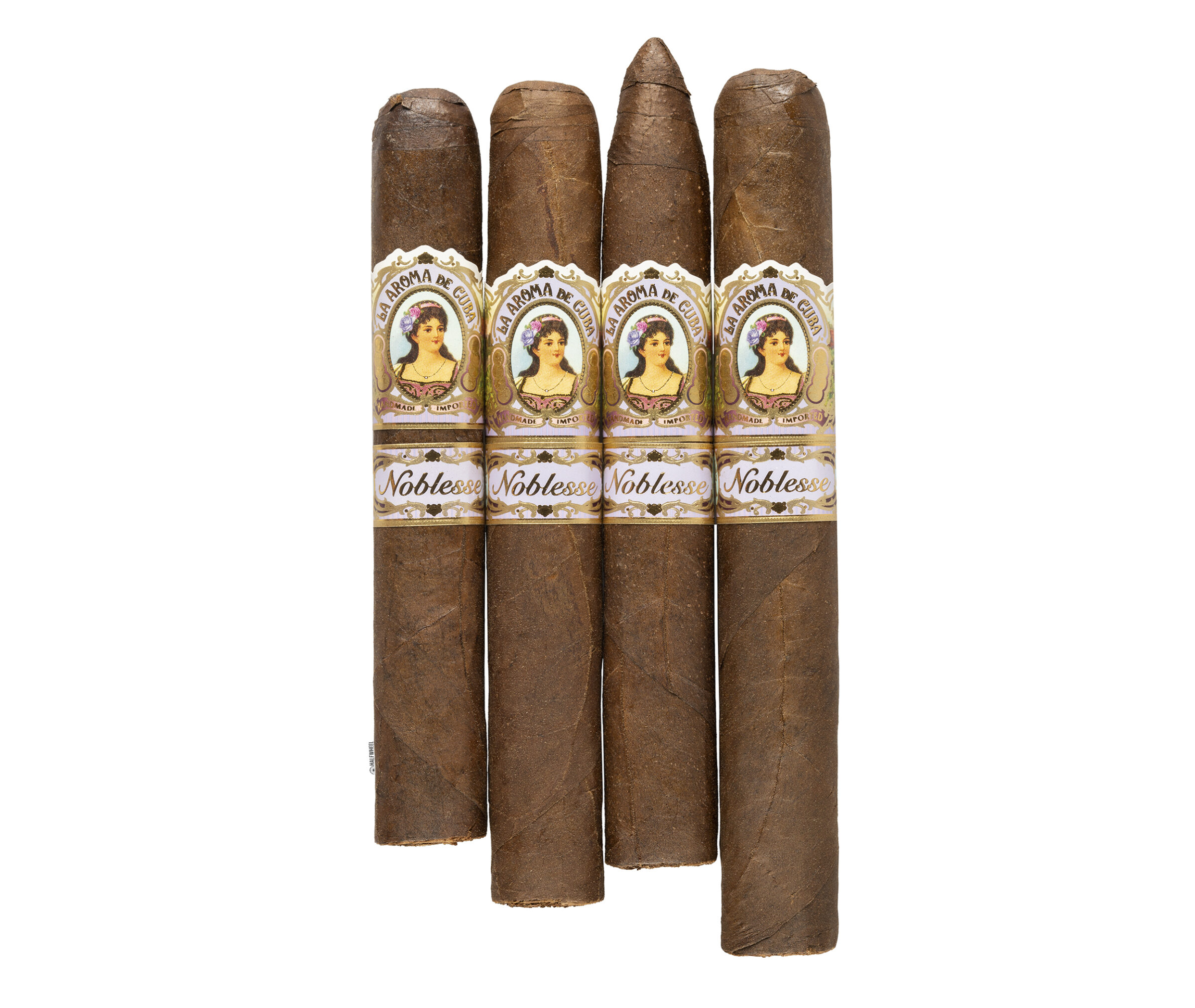
- La Aroma de Cuba Noblesse Regency (5 1/2 x 50) — $19 (Box of 24, $456)
- La Aroma de Cuba Noblesse Coronation (6 x 52) — $19.50 (Box of 24, $468)
- La Aroma de Cuba Noblesse Viceroy (6 1/8 x 52) — $19.75 (Box of 24, $474)
- La Aroma de Cuba Noblesse Monarchy (6 1/2 x 56) — $20 (Box of 24, $480)
88
Overall Score
While it has been quite some time since I have smoked a La Aroma de Cuba cigar, I found the profile of the Noblesse Monarchy to be creamy and slightly sweet, with enjoyable flavors that are balanced nicely with the medium-plus strength. While the construction of all three cigars was fantastic, the profile of one cigar—the first one I smoked for this review—was obviously lacking some of the depth and creaminess the other two cigars exhibited, which impacted the final score. In the end, while not as good as the first incarnation, the newest version of the Noblesse line was enjoyable enough to recommend, as long as the price point is not a turnoff.
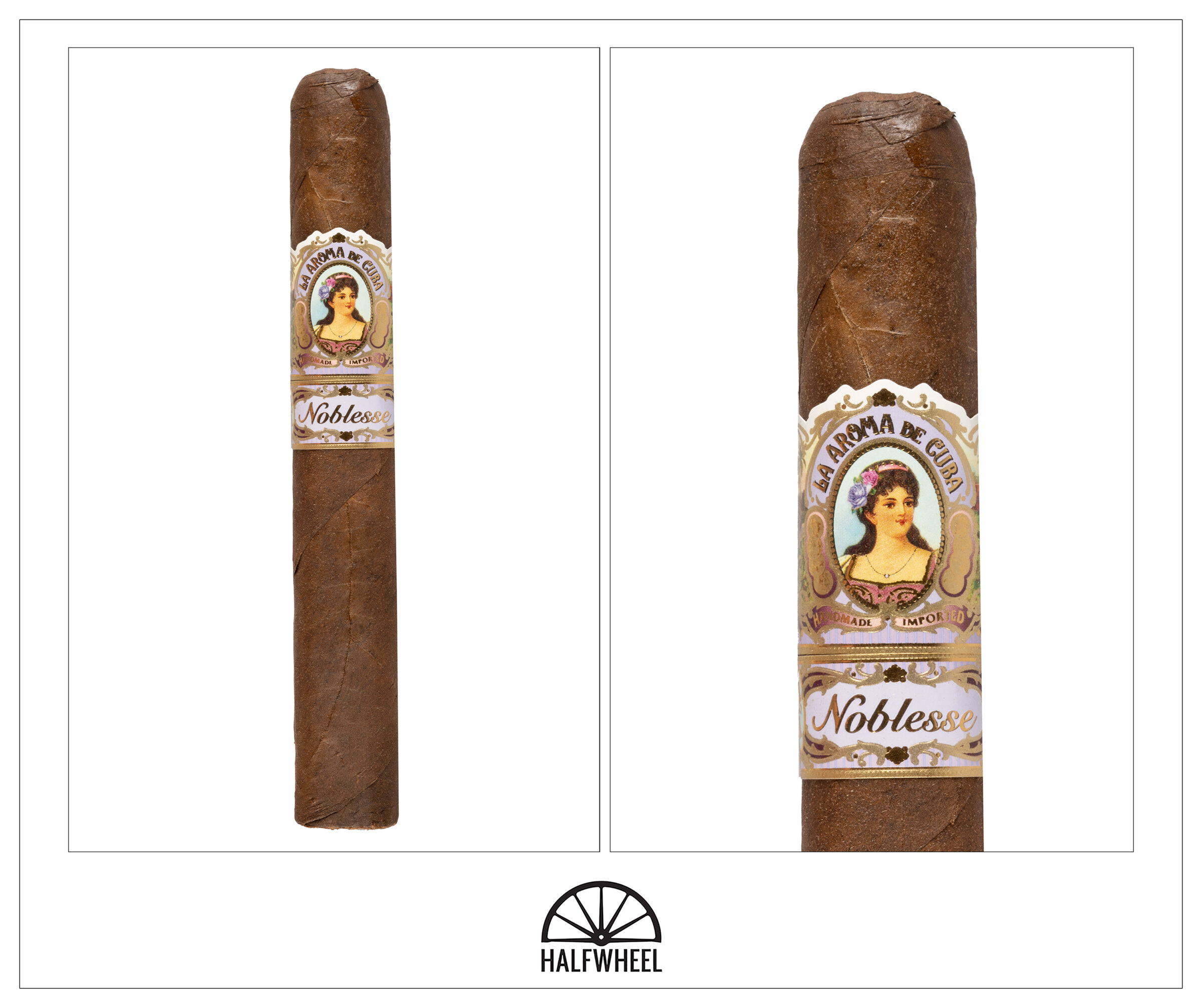
- Cigar Reviewed: La Aroma de Cuba Noblesse Monarchy
- Country of Origin: Nicaragua
- Factory: My Father Cigar S.A.
- Wrapper: Mexico (San Andrés Oscuro)
- Binder: Nicaragua
- Filler: Nicaragua
- Length: 6 1/2 Inches
- Ring Gauge: 56
- Shape: Box-Pressed
- MSRP: $20 (Box of 24, $480)
- Release Date: June 3, 2024
- Number of Cigars Released: Regular Production
- Number of Cigars Smoked For Review:
There has always been something about really soft-box pressed cigars that has appealed to me from a visual sense: not quite round but not quite square, the La Aroma de Cuba Noblesse Monarchy is a stranger stuck between two worlds. The wrappers covering the cigars are a deep, dark brown color with a reddish tint and a hint of oil, although there is a small amount of tooth when I run my finger down them. All three cigars lack any prominent veins, but they are all extremely spongy when squeezed. Aromas from the wrappers are virtually identical: very distinct dark chocolate followed by earthiness, creamy hay, barnyard, cedar and a touch of baker’s spices. A creamy cedar scent is the main scent emanating from the feet—there is plenty of chocolate present as well, but for two of the cigars, it is much more of a powdery cocoa nibs note—along with a fudge sweetness, herbs, generic nuttiness and leather tack. More cocoa nibs lead the flavors on the cold draws, with leather tack, anise, generic nuttiness, woodiness, faint raisin sweetness and very light chalk close behind.
Bitter espresso, black pepper, and slight spice start the cigars off, and while all three remain a part of the profile during the first third, they are in different amounts. A combination of creamy cedar and gritty earth quickly takes over the top spots in the profile, followed by some of the aforementioned bitter espresso, dry straw, toasted bread, cashews and cinnamon. Two of the three cigars—the second and third ones—feature a light citrus peel note on the finish, and while it is never exactly overwhelming, the flavor is strong enough to impact the overall profile in a positive way. Flavors on the retrohales are light across the board, but I can discern a small amount of black pepper and some bready, graham cracker sweetness, the latter of which seems to be getting slightly stronger as the first third comes to an end. Flavor is at medium-full, but the body and strength lag behind at mild-medium and solid medium, respectively. In terms of construction, there are absolutely no problems at all with any of the cigars when it comes to the burn lines, the smoke production or the draws.
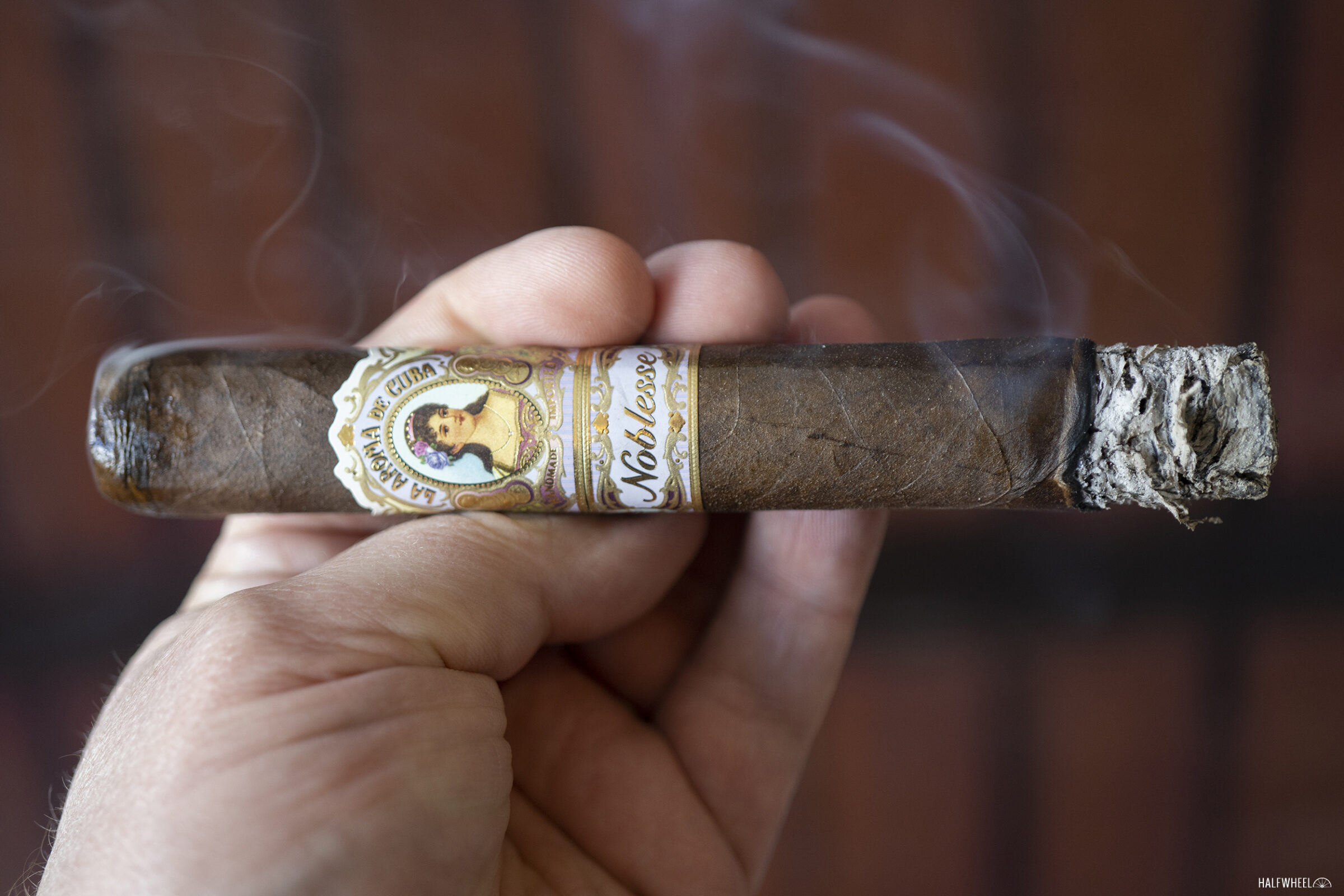
Gritty earth and creamy cedar continue to dominate the profile of the cigars during the second third, but the secondary flavors now include dark chocolate, cinnamon, almonds, sourdough bread, sawdust and coffee beans. The citrus peel note is still present on the finish of the second and third cigars, but it is not nearly as strong as it was in the first third, and it has totally disappeared by the time the second third comes to an end. There is a bit more of the graham cracker sweetness on the retrohale and a bit less black pepper, but neither note is substantial enough to really move the needle at this point. Flavor remains at medium-full, the body increases to a solid medium and the strength increases to a point just over the medium mark. One cigar needs a correction from my lighter to stay on track, but other than that, the construction continues to be excellent.
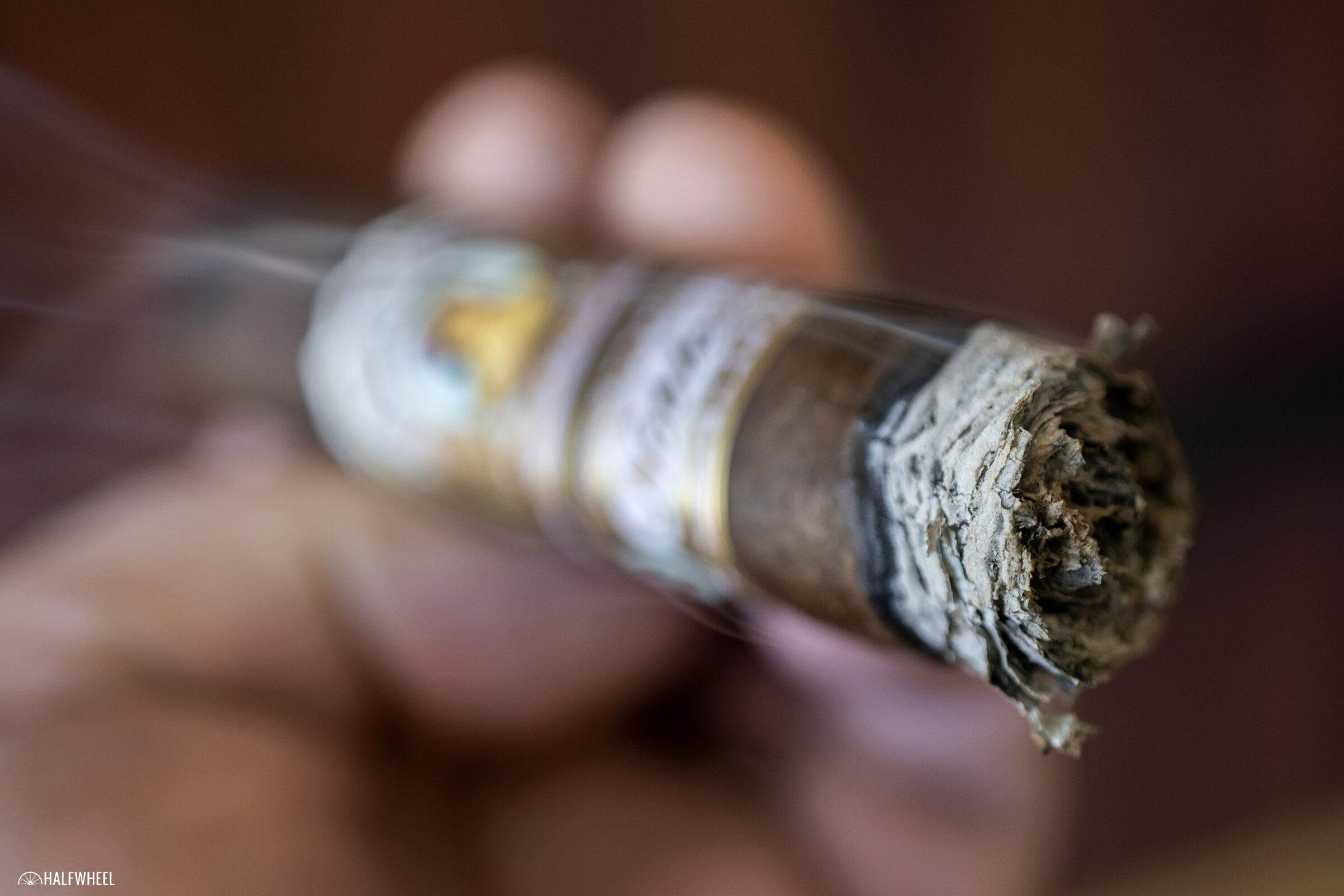
While the profiles of the cigars remain creamy in nature during the final third and the cedar flavor continues to be a top note, the gritty earth from the first two-thirds is replaced by a plain popcorn flavor. Additional flavors of bitter espresso, earth, leather tack, cocoa nibs, generic nuttiness and hay show up at various points, while the amount of black pepper and graham cracker sweetness changes very little when compared to the second third. Flavor ends the cigar at medium-full and the body remains at a solid medium, but the strength increases just enough to land at medium-plus. The construction is once again issue-free, as the burn lines, smoke production and draws work in harmony until I am finished with all three cigars.
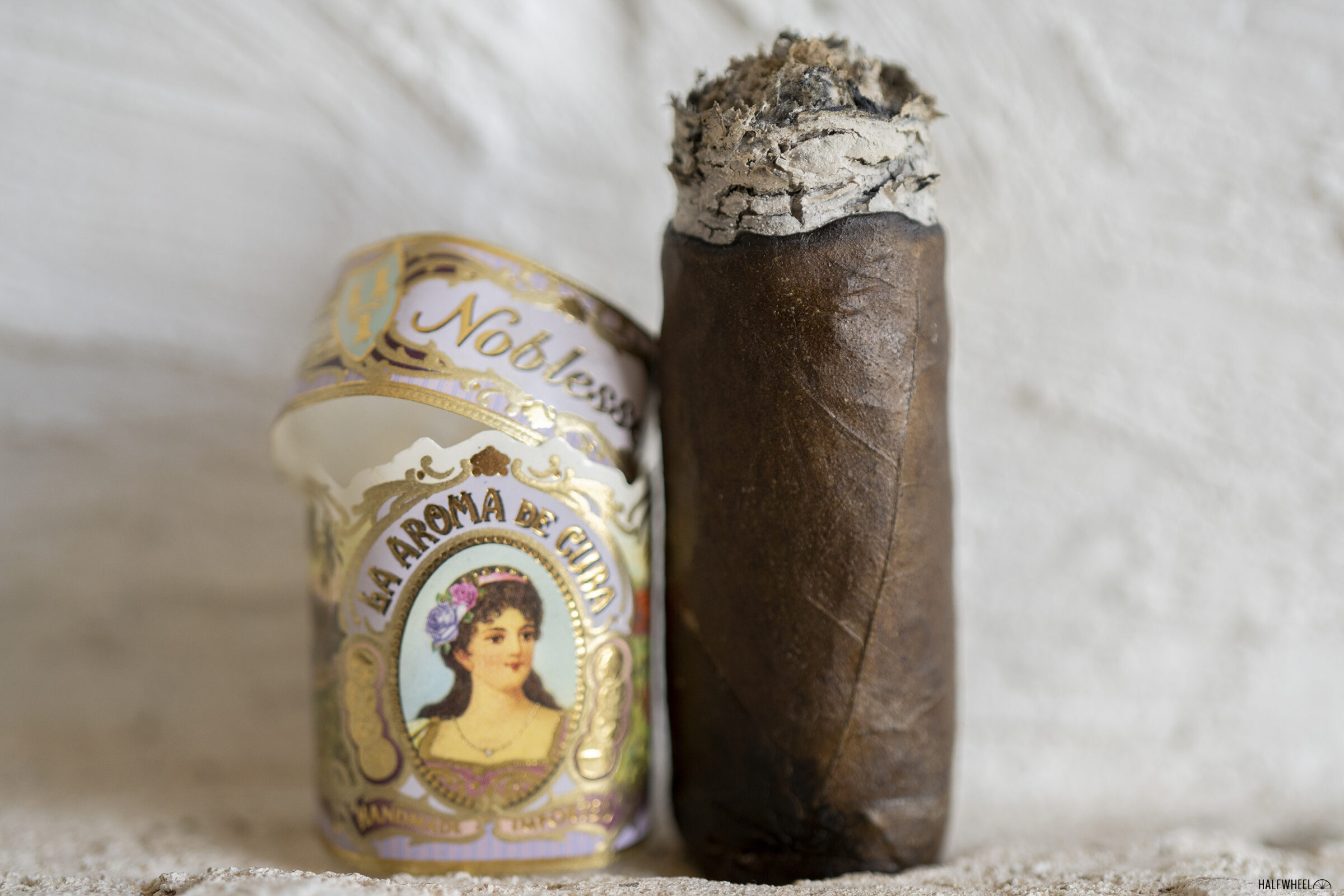
Final Notes
- When it goes to stores outside of the U.S., it will likely carry the name of La Aroma del Caribe, the name Ashton uses for the La Aroma de Cuba brand outside of the U.S. This is due to trademark laws that make it difficult to use “Cuba” in the name of a product that is not Cuban.
- The names of the four vitolas make sense when you consider that Noblesse is French for nobility.
- When the original La Aroma de Cuba Noblesse line was announced, it was initially planned as one of two separate releases for the Ashton Cigar Bar, which opened in Philadelphia in 2015.
- I have always loved the subtle but visually harmonious combination of pastel colors that Ashton uses for some of the La Aroma de Cuba releases. For example, this version of the Noblesse line features a striking purple background accented with a light teal, while the colors in the original Noblesse cigars were reversed.
- After a straight cut, the draw on my first cigar was a bit more open than I like—albeit still well within normal limits—but cutting a bit less off the cap for the second and third cigars fixed the issue nicely.
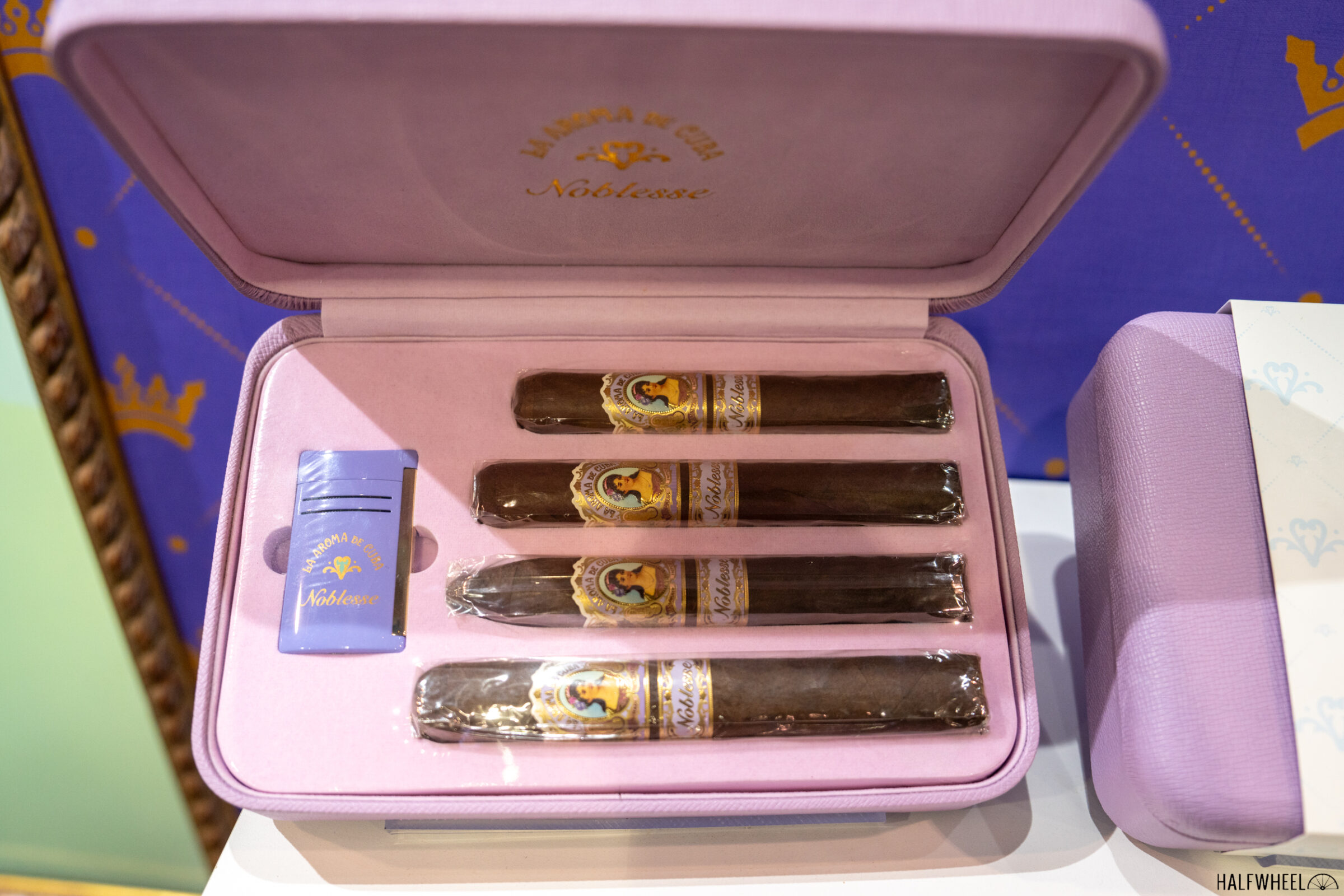
- In addition to the 3,000 boxes of cigars, Ashton is shipped 800 La Aroma de Cuba Noblesse 4-Cigar + S.T. Dupont Lighter Gift Sets, a limited edition sampler with an MSRP of $375 that includes one each of the four La Aroma de Cuba Noblesse vitolas as well as a Noblesse-branded S.T. Dupont MaxiJet lighter.
- The bands on these cigars are some of the easiest to remove compared to just about any cigar I have smoked in quite a while.
- While the La Aroma de Cuba Noblesse Monarchy’s profile is inherently creamy, this is one of those cigars that turns bitter fast if puff too quickly, so my advice is to take it slow and easy.

- These cigars are officially listed as being 6 1/2 x 56 vitolas, and none of the three I smoked hit both measurements exactly, although the first one was closest.
- Along with the note above, there was a noticeable difference in how long it took to smoke these cigars. My first cigar—the lightest one—took me two hours and three minutes, while the second one took two hours and 24 minutes and the last one came in a two hours and 44 minutes.
- Cigars for this review were purchased by halfwheel.
- Site sponsors Atlantic Cigar Co., Cigars Direct, Famous Smoke Shop, JR Cigars and Smokingpipes all sell the La Aroma de Cuba Noblesse Monarchy on their respective websites.
88
Overall Score
While it has been quite some time since I have smoked a La Aroma de Cuba cigar, I found the profile of the Noblesse Monarchy to be creamy and slightly sweet, with enjoyable flavors that are balanced nicely with the medium-plus strength. While the construction of all three cigars was fantastic, the profile of one cigar—the first one I smoked for this review—was obviously lacking some of the depth and creaminess the other two cigars exhibited, which impacted the final score. In the end, while not as good as the first incarnation, the newest version of the Noblesse line was enjoyable enough to recommend, as long as the price point is not a turnoff.
I have worn many hats in my life up to this point: I started out as a photojournalist for the Dallas Morning News and the Fort Worth Star-Telegram, then transitioned to photographing weddings—both internationally and in the U.S.—for more than a decade. After realizing that there was a need for a cigar website containing better photographs and more in-depth information about each release, I founded my first cigar blog, SmokingStogie, in 2008. SmokingStogie quickly became one of the more influential cigar blogs on the internet, known for reviewing preproduction, prerelease, rare, extremely hard-to-find and expensive cigars, and it was one of the predecessors to halfwheel, which I co-founded.








